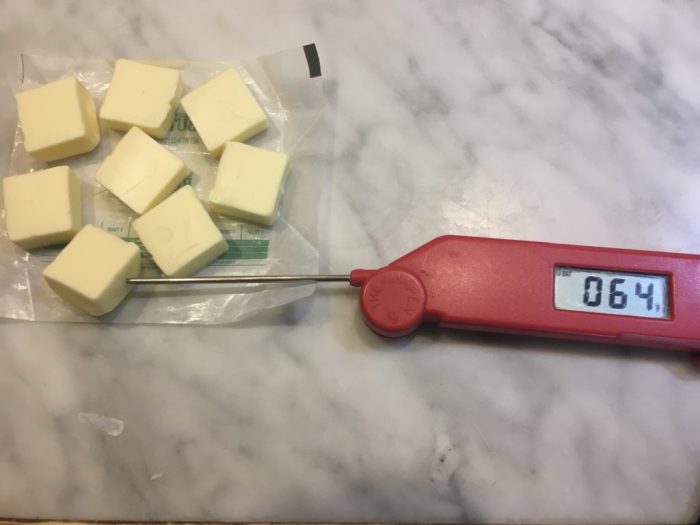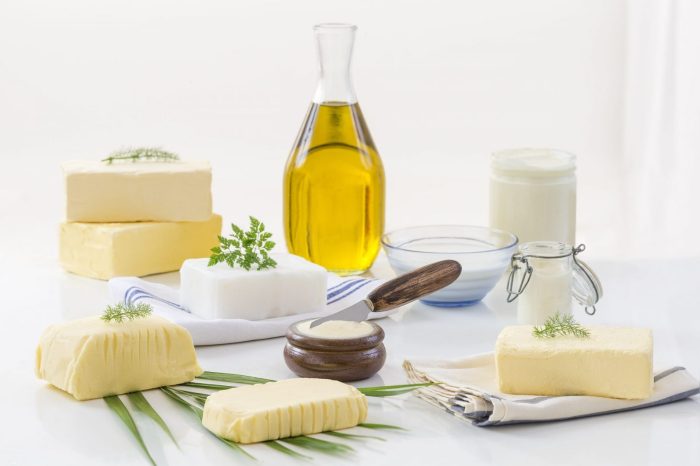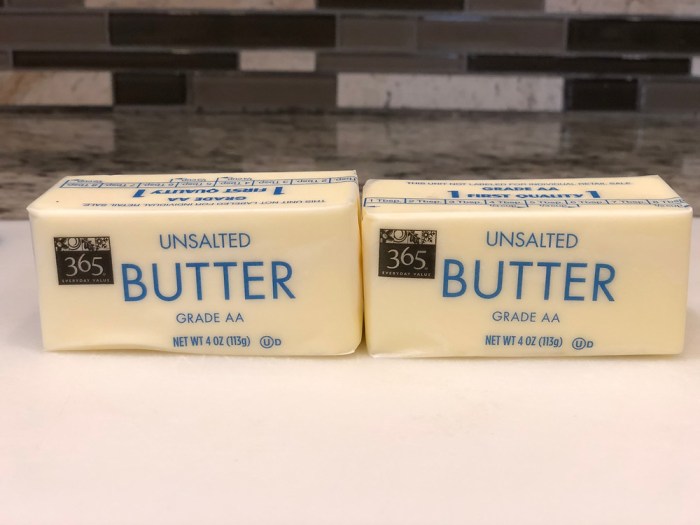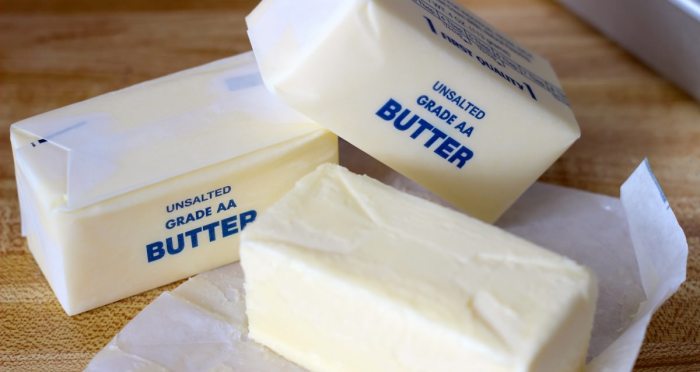Butter is the main strengthener used in baking. – Butter is the main strengthener used in baking, a culinary cornerstone that imparts flavor, texture, and structure to countless baked goods. Its versatility and unique properties make it an indispensable ingredient for bakers of all skill levels.
From flaky croissants to tender cakes, butter plays a pivotal role in creating the delectable treats we enjoy. This article delves into the multifaceted world of butter in baking, exploring its types, functions, and applications.
Types of Butter

Butter, a dairy product made by churning cream or milk, comes in various types, each with its unique flavor, texture, and melting point.
- Unsalted Butter:Contains no added salt, allowing bakers to control the level of salinity in their baked goods.
- Salted Butter:Pre-seasoned with salt, adding flavor and enhancing the taste of baked goods.
- Cultured Butter:Made from fermented cream, resulting in a tangy and slightly acidic flavor.
- Whipped Butter:Aerated butter with a lighter texture, commonly used for spreading and as a topping.
- Clarified Butter (Ghee):Butter with milk solids removed, resulting in a high smoke point and nutty flavor.
The type of butter used can significantly impact the final baked product. Unsalted butter provides flexibility in flavor control, while salted butter adds depth and richness. Cultured butter imparts a tangy note, whipped butter creates a lighter texture, and clarified butter adds a nutty flavor and prevents burning at high temperatures.
Butter’s Role in Baking: Butter Is The Main Strengthener Used In Baking.
Butter plays a crucial role as a strengthener in baked goods due to its unique composition and properties.
- Structure:Butter creates a stable structure by forming a network of fat globules that trap air and provide support.
- Texture:Butter contributes to a tender and flaky texture by inhibiting gluten formation and creating pockets of air.
- Flavor:Butter imparts a rich and buttery flavor, enhancing the overall taste and aroma of baked goods.
Baked goods that rely heavily on butter for strength include croissants, puff pastry, shortbread cookies, and pound cake.
Butter vs. Other Fats

Butter can be compared to other fats commonly used in baking, such as margarine, shortening, and oil.
| Fat | Composition | Texture | Functionality |
|---|---|---|---|
| Butter | 80-86% fat, 12-16% water, 2-4% milk solids | Solid at room temperature, creamy and spreadable | Strengthener, flavor enhancer |
| Margarine | Vegetable oils, water, salt, emulsifiers | Solid at room temperature, similar to butter | Strengthener, but not as effective as butter |
| Shortening | Hydrogenated vegetable oils | Solid at room temperature, firm and waxy | Strengthener, creates a crumbly texture |
| Oil | Liquid at room temperature | Not a strengthener, adds moisture and tenderness |
Butter is unique in its composition and functionality. Its high fat content and solid texture make it an effective strengthener, while its flavor and aroma contribute to the overall quality of baked goods.
Butter in Laminated Doughs

Butter is crucial in laminated doughs, such as croissants and puff pastry, where it creates the characteristic layers.
- Lamination:Butter is rolled into the dough, creating layers that separate during baking, forming the flaky texture.
- Techniques:Lamination involves repeated rolling, folding, and chilling to create the desired layers.
- Equipment:Specialized equipment, such as a laminator or sheeter, can assist in the lamination process.
Proper lamination techniques ensure that the butter remains cold and solid, preventing it from melting and blending into the dough. This allows for the formation of distinct layers that create the desired texture.
Butter in Cakes and Cookies

Butter plays a vital role in creating tender and flavorful cakes and cookies.
- Crumb Structure:Butter inhibits gluten formation, resulting in a tender and crumbly texture.
- Moisture:Butter adds moisture to the batter, preventing dryness and enhancing the overall flavor.
- Browning:Butter contributes to the browning process, giving cakes and cookies their golden color and caramelized flavor.
Examples of cakes and cookies that showcase the importance of butter include pound cake, shortbread cookies, and chocolate chip cookies.
Answers to Common Questions
What is the difference between butter and margarine?
Butter is made from cream, while margarine is made from vegetable oils. Butter has a richer flavor and higher fat content than margarine.
What is the best type of butter for baking?
Unsalted butter is the best type of butter for baking because it allows you to control the amount of salt in your baked goods.
How do I soften butter?
You can soften butter by leaving it at room temperature for 30 minutes or by microwaving it on low power for 10-15 seconds.